Table of Contents
Introduction
Attendance issues at the workplace is a challenge many employers face. It’s a delicate task, one that requires finesse and precision.
After all, your company’s attendance policy sets the tone for employee behavior, and addressing irregular attendance is crucial for maintaining a productive and responsible workforce.
Did you know?
On average, a shift worker costs a company $2,660 in absenteeism costs each year, and every year in the U.S., $36.4 billion is lost from employee absenteeism.
Addressing these issues is not only a matter of maintaining a positive work environment but also a significant financial concern.
In this blog post, we’ll guide you through crafting an employee attendance warning letter to address attendance problems.
From sample templates and tips on what to include to understanding the importance of proper communication and potential consequences, we’ll cover everything you need to know to effectively address attendance issues in your organization.
What Is A Warning Letter?
How to address employee attendance issues?
A warning letter is a formal written communication from an employer to an employee outlining concerns or issues about employee behavior, performance, or conduct.
It serves as a documented record of the concerns and expectations, typically the first step in addressing and resolving workplace issues.
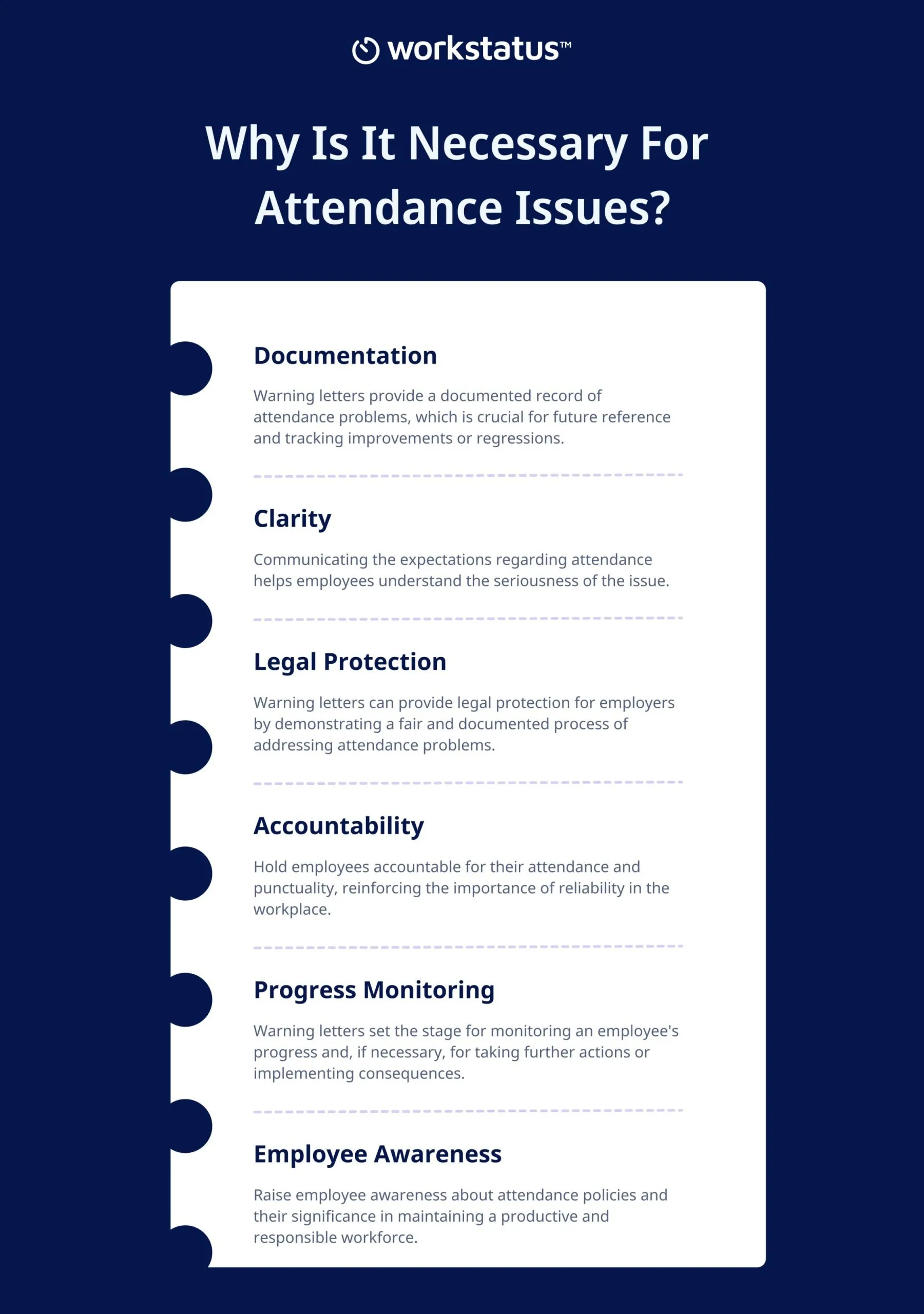
Components Of An Effective Warning Letter
1. Clear Statement of the Problem
An impactful warning letter begins with a straightforward and unambiguous statement of the problem.
This serves to notify the employee that the communication is a formal warning for attendance issues. To achieve clarity:
- State explicitly that the letter is an official warning regarding the employee’s attendance.
- Specify the exact dates or periods in question, making it clear which instances are problematic.
- Emphasize the significance of adhering to company attendance policies to maintain a productive and responsible workforce.
2. Specific Details Of Attendance Issues
Providing specific details about attendance problems is crucial for ensuring that the employee understands the extent and severity of their non-compliance. In this section, include:
- Dates and times of the incidents, which could be specific days of absence or tardiness.
- Quantify the number of absences or instances of tardiness, giving the employee a clear picture of their track record.
- Mention any prior verbal or written warnings related to attendance, demonstrating a documented history of the issue.
3. Company Attendance Policy
It’s essential to reference the company’s attendance policy in the warning letter to reinforce the connection between the employee’s actions and established expectations. Here’s how to do it effectively:
- A summary of the key points from the attendance policy, emphasizing punctuality and consistent attendance.
- Direct the employee to the complete attendance policy, indicating where they can find it (e.g., in the employee handbook or on the company’s intranet).
4. Consequences Of Continued Non-compliance
The warning letter should clearly outline the potential consequences if the employee disregards attendance policies. This can include progressive disciplinary measures. Be sure to:
- Specify the possible actions that may be taken if attendance issues persist, such as verbal counseling, further written warnings, suspension, or even termination as a last resort.
- Mention that the specific consequences will depend on the severity of the ongoing non-compliance and the company’s policies.
5. Employee Responsibilities
This section outlines the employee’s expectations to address the attendance issue and move forward positively. To ensure clarity:
- Request the employee’s commitment to improving their attendance and punctuality.
- Provide details on how the employee can seek help or access necessary resources, if available within the organization.
- Set a timeline for improvement and establish a follow-up plan to monitor progress, demonstrating the company’s willingness to support the employee in making necessary changes.
When effectively combined, these components create a comprehensive and clear warning letter that can effectively address attendance issues in the workplace.
To help you understand how to implement these components effectively, here is a sample warning letter template that you can tailor to fit your organization’s specific needs and circumstances.
Sample Warning Letter Template
[Your Company Letterhead]
[Date]
[Employee’s Name]
[Employee’s Address]
[City, State, Zip Code]
Dear [Employee’s Name],
Re: Formal Warning Letter for Irregular Attendance
I hope this letter finds you well. We value your contributions to [Company Name] and understand the importance of a reliable and dedicated workforce.
However, it has come to our attention that there have been ongoing attendance issues that need to be addressed.
1. Clear Statement of the Problem
This letter serves as an official warning regarding your attendance. It is essential to maintain punctuality and consistent attendance to ensure the smooth functioning of our operations.
The purpose of this letter is to make you aware of the seriousness of this matter.
2. Specific Details of Attendance Issues
To provide you with a clear understanding of the issue, we have documented the following instances of attendance problems:
On [Date], you were absent without prior notification.
On [Date], you arrived at work 30 minutes late without a valid reason.
On [Date], you called in sick without providing a medical certificate, as company policy requires.
These incidents highlight the irregularity in your attendance, affecting your overall work performance.
Furthermore, we would like to remind you that you have previously received verbal counseling regarding attendance issues on [Date] and a written warning on [Date].
Despite our previous interventions, the problem persists.
3. Company Attendance Policy
Please note that [Company Name] has a clear attendance policy in place, which emphasizes the importance of punctuality and consistent attendance.
You can find detailed information on our attendance policy in the employee handbook, specifically in Section [Section Number].
4. Consequences Of Continued Non-compliance
We must stress the significance of resolving these attendance issues promptly. Failure to do so may lead to more severe consequences.
Depending on the severity and continuation of non-compliance, the following actions may be taken:
- Further verbal counseling.
- Additional written warnings.
- Suspension from work.
- In extreme cases, termination of employment.
We genuinely hope it doesn’t come to this point, but your continued irregular attendance places the company in a challenging position.
5. Employee Responsibilities
To address this issue effectively and move forward positively, we expect the following from you:
- Commit to improving your attendance and punctuality.
- If you are facing any challenges affecting your attendance, please contact the HR department for assistance or access any resources available within the organization.
We expect significant improvements in your attendance and punctuality within the next [Specify Timeframe].
We will closely monitor your progress and offer any support you need during this period. Our goal is to help you succeed and contribute effectively to the company.
Please sign and return a copy of this letter to indicate your understanding and commitment to addressing these attendance issues.
If you have any questions or need further clarification, please do not hesitate to contact the HR department.
Sincerely,
[Your Name]
[Your Title]
[Company Name]
[Employee’s Signature] [Date]
Let’s delve into the other recommended approaches for composing a formal warning letter.
Effective Employee Warning Letters: Best Practices to Follow
1. Use a Professional Tone:
Maintaining a professional tone in the warning letter is essential for creating respectful and constructive communication. A professional tone involves:
- Formal Language
Use language that is formal and appropriate for workplace communication. Avoid slang, jargon, or overly casual expressions.
- Politeness
Maintain politeness and respect throughout the letter. Avoid personal attacks, name-calling, or derogatory language.
- Objectivity
Keep the letter objective, focusing on the facts and the behavior or performance issues rather than making emotional or subjective judgments.
2. Be Specific and Objective:
Being specific and objective in the warning letter is crucial to ensure that the employee fully comprehends the issues and what is expected of them. This includes:
- Detailed Descriptions
Clearly describe the problematic behavior or performance, providing specific written warning for attendance examples and instances.
- Evidence-Based Claims
Support your claims with data and facts whenever possible. Concrete evidence makes the issues undeniable and can help the employee understand the seriousness of the situation.
- Avoid Generalizations
Refrain from making general or sweeping statements about the employee’s behavior or performance. Address each issue individually.
3. Offer Guidance For Improvement
In addition to identifying the issues, the warning letter should provide guidance and support to help the employee rectify the problems. This includes:
- Clear Expectations
Clearly state the expected changes or improvements in behavior or performance. Use measurable criteria, such as specific metrics or deadlines, to easily assess progress.
- Available Resources
If the organization offers resources, training, or support to help the employee improve, mention these in the letter. It demonstrates the company’s commitment to the employee’s success.
- Encouragement and Positivity
Express confidence in the employee’s ability to make the necessary improvements. Positivity can motivate the employee and make them feel supported rather than discouraged.
4. Set a Follow-Up Meeting
Scheduling a follow-up meeting is crucial to ensure that the employee’s progress is monitored and that there is a channel for ongoing communication. This includes:
- Scheduled Date
Specify a date for the follow-up meeting. This ensures that both the employee and the manager are committed to revisiting the issues and tracking progress.
- Two-Way Communication
Use the follow-up meeting to engage in a two-way conversation. Listen to the employee’s perspective, challenges, and suggestions for improvement, and provide constructive feedback.
- Documentation
Record the follow-up meeting, including the discussion and any outcomes. This documentation is vital for tracking the employee’s progress and, if necessary, taking further action.
5. Communicate The Consequences Clearly
The employee should fully understand the potential consequences if the issues are not resolved. Clear communication about consequences could include:
- Explicit Statements
Clearly state the potential consequences of continued unsatisfactory performance or behavior. For example, mention the possibility of further disciplinary actions, including termination.
- Company Policies
Reference relevant company policies, guidelines, or codes of conduct that pertain to the issues at hand. This demonstrates that the organization’s expectations are well-defined and consistent.
- Open for Questions
Encourage the employee to seek clarification or ask questions if they have any doubts about the consequences. Open communication can reduce misunderstandings and resistance.
These were vital best practices when designing and crafting a warning letter for attendance issues.
However, for those seeking a comprehensive solution for employee attendance tracking and management, Workstatus is the perfect tool.
Let’s look at how Workstatus can simplify attendance management in your organization.
Workstatus Your Ultimate Attendance Management Ally

Workstatus attendance management solution is designed to help organizations streamline and enhance their workforce attendance tracking processes.
With a wide array of features, Workstatus provides businesses with the means to efficiently monitor employee attendance, maintain compliance, and promote accountability.
Workstatus empowers employers to track and manage attendance in real time, offering insights and data to drive informed decisions and improve overall workforce management.
Here are some of the key features that make Workstatus indispensable for efficient attendance management:
1. Tracking and Recording Attendance Data
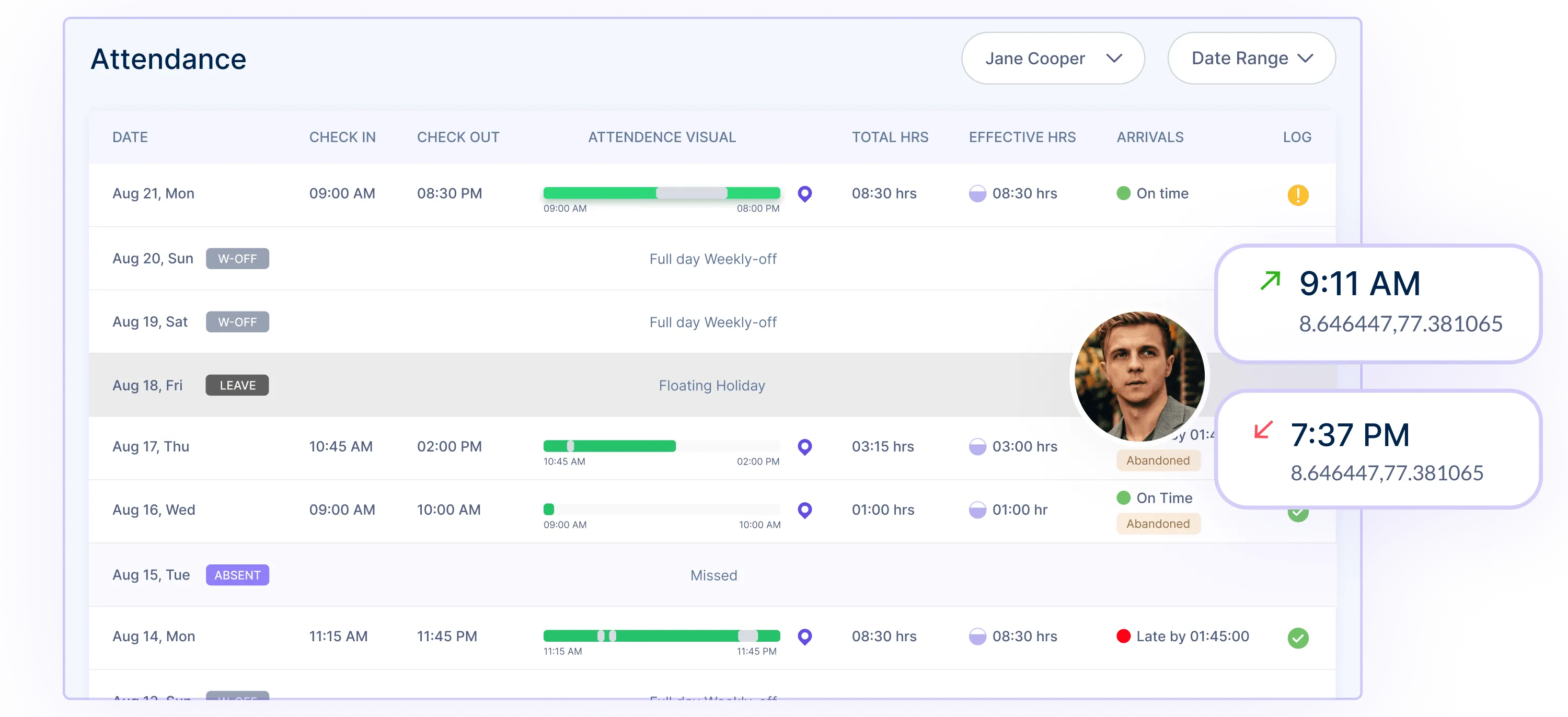
Workstatus attendance management tool provides a robust system for tracking and recording attendance data, ensuring employers have accurate and up-to-date information about their workforce’s attendance.
- Real-Time Tracking
Workstatus offers real-time attendance tracking, allowing employers to instantly see who is present, absent, or late. This level of visibility provides a clear picture of your workforce’s attendance status.
- Data Collection
Attendance data is collected automatically as employees clock in and out. This minimizes the manual effort required to maintain accurate attendance records.
- Historical Data
Workstatus stores historical attendance data, enabling organizations to analyze trends, identify issues, and make data-driven decisions.
- Customizable Reports
The platform generates customizable reports, allowing you to tailor attendance data to your needs, such as compliance reporting or payroll processing.
2. GPS Tracking and Geofencing
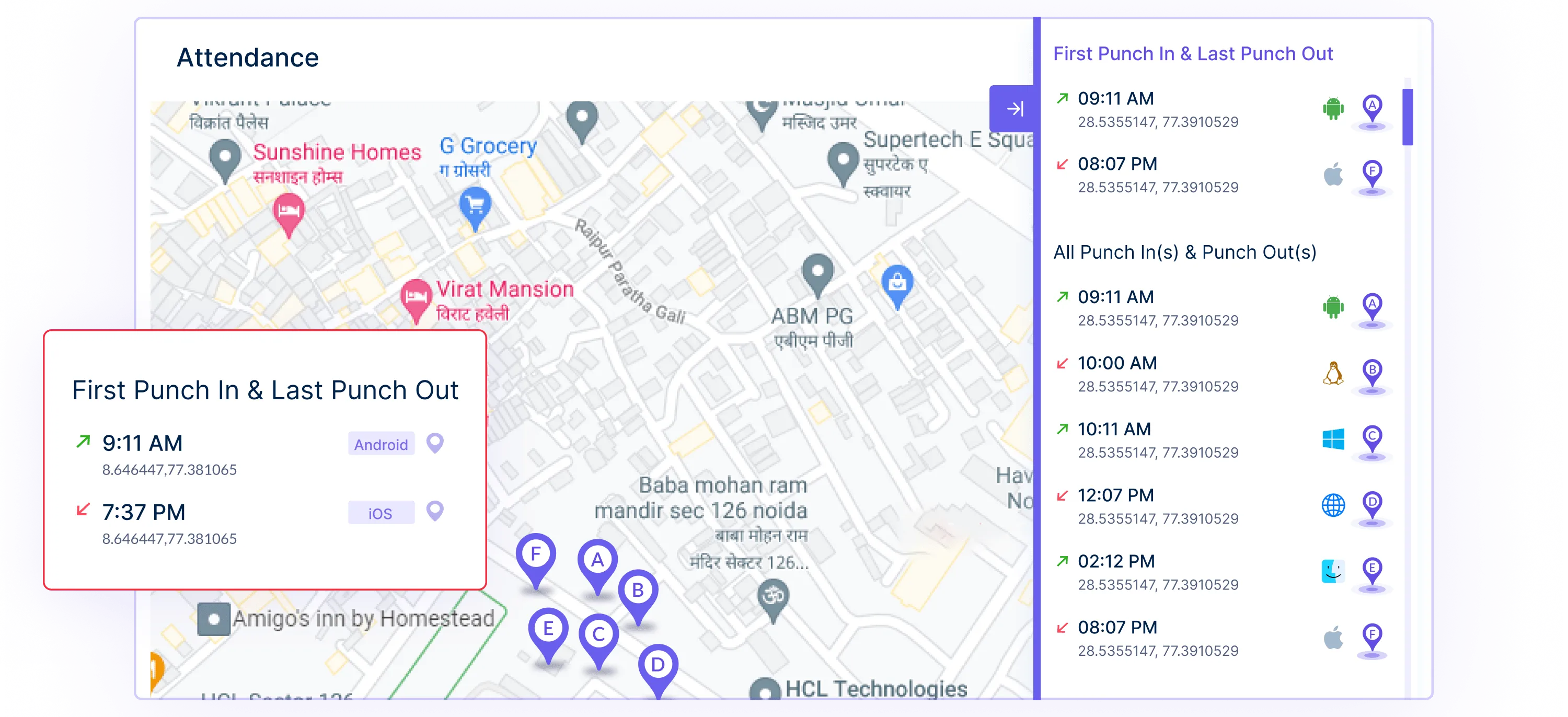
Workstatus GPS tracking and geofencing features are handy for organizations with remote or field-based teams, enhancing attendance management and accountability.
- GPS Tracking
Workstatus leverages GPS technology to track employee attendance based on location. This is especially valuable for businesses with a dispersed workforce.
- Geofencing
The feature allows organizations to create virtual boundaries on a map. When employees enter or exit these predefined areas, their attendance is automatically recorded, ensuring they are where they are supposed to be.
- Enhanced Accuracy
Geolocation and geofencing provide a high level of accuracy in attendance tracking, reducing the chances of attendance fraud or disputes.
3. Time Off Management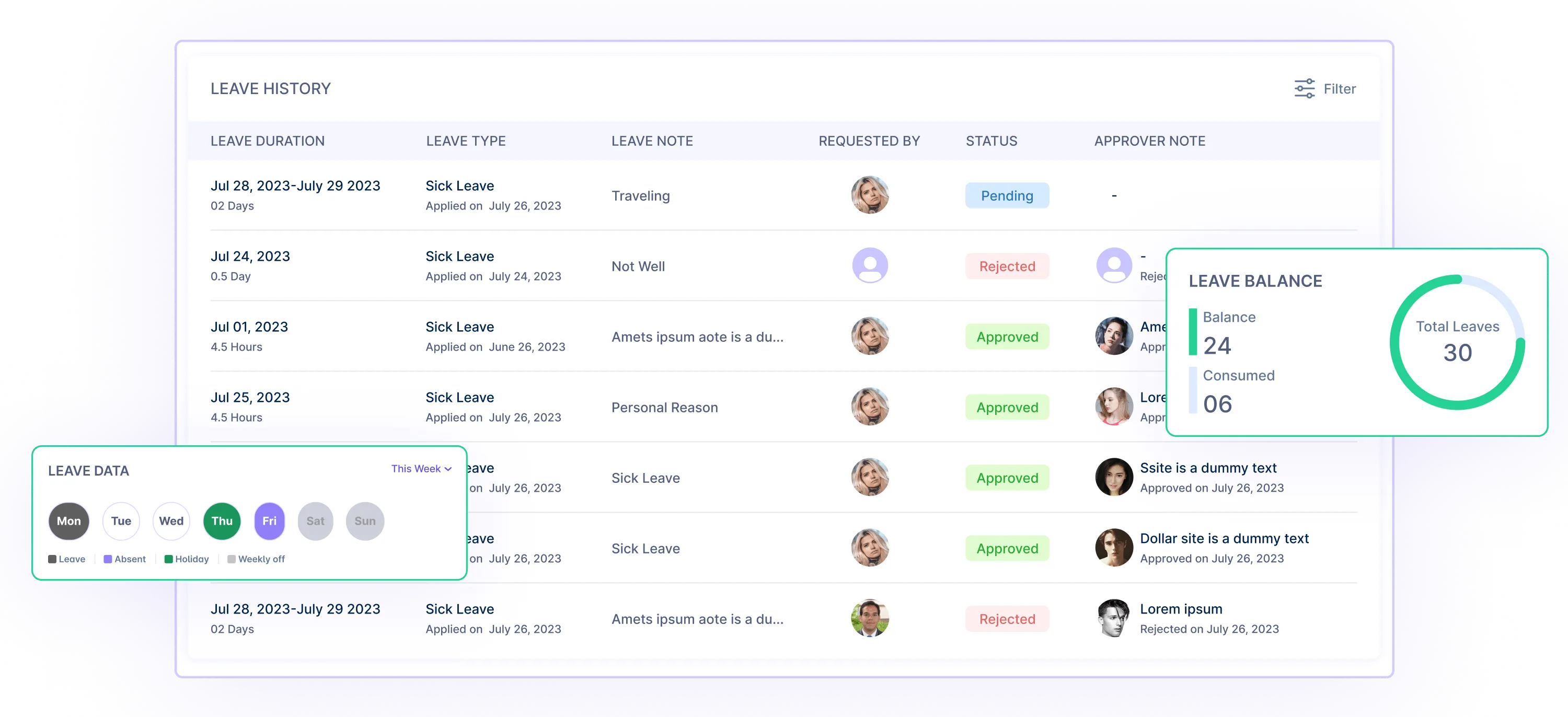
Workstatus time off management feature simplifies requesting, approving, and tracking time off, promoting transparency and efficient workforce planning.
- Request Submissions
Employees can conveniently request time off through the platform, specifying the type of leave, dates, and reasons for their absence.
- Manager Approval
Managers receive time off requests and can approve or deny them directly within the system. This automated process ensures that requests are processed promptly.
- Time Off Balances
Workstatus keeps track of employees’ time off balances, making it easy for both employees and managers to understand how much leave remains.
- Visibility and Accountability
Time off data is easily accessible, allowing for better workforce planning and ensuring employees take their entitled time off without overburdening the team.
4. Selfie Validation
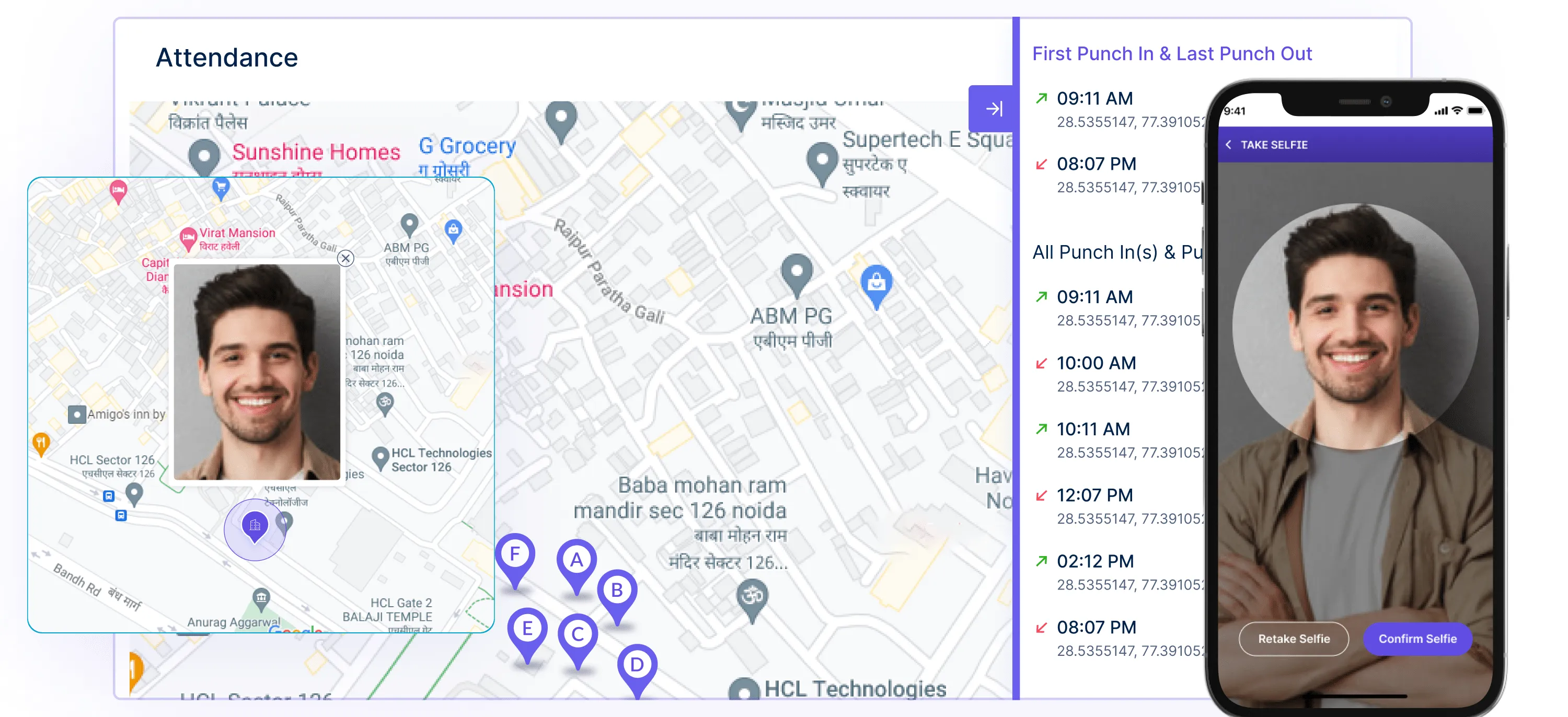
Workstatus’s selfie validation feature enhances attendance tracking and management by adding a layer of security and verification.
- Biometric Authentication
Selfie validation utilizes biometric facial recognition technology to verify an employee’s identity when clocking in or out. This significantly reduces the risk of buddy punching and fraudulent attendance.
- Mobile Device Verification
Employees can validate their attendance by taking a selfie with their mobile devices, ensuring they are physically present when recording their attendance.
- Accuracy and Accountability
Selfie validation adds accuracy to attendance tracking, ensuring that employees personally confirm their attendance and enhancing accountability.
- Real-Time Authentication
Selfie validation occurs in real time, preventing unauthorized or dishonest attendance actions.
5. Automating Notifications and Reminders
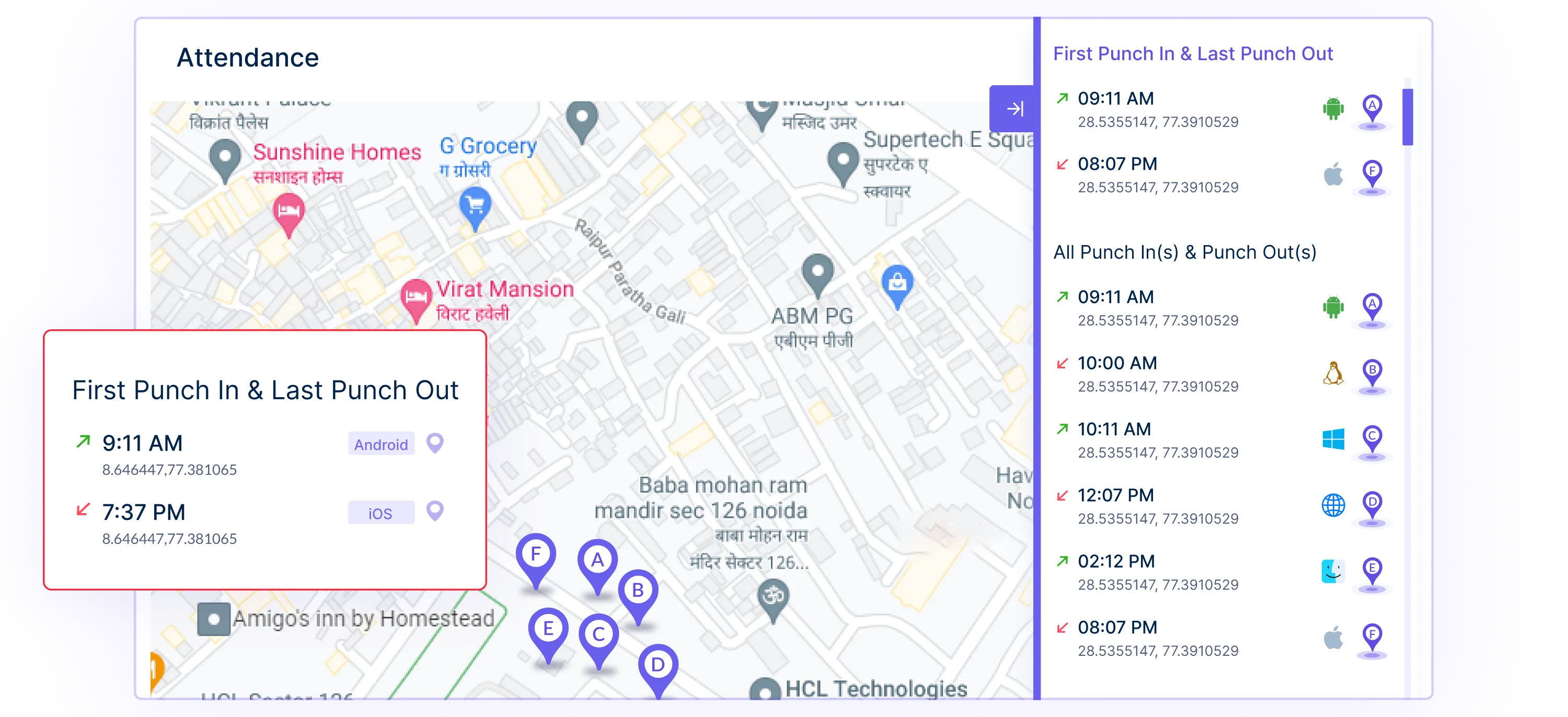
Workstatus attendance management tool offers the capability to automate notifications and reminders, ensuring that both employees and managers stay informed and on top of attendance-related events.
- Clock-In/Out Reminders
The tool can send automated reminders to employees, prompting them to clock in or out at specified times, reducing the risk of missed punches.
- Time Off Request Alerts
Notifications are sent to managers when employees submit time off requests, ensuring that these requests are promptly reviewed and acted upon.
- Custom Alerts
Organizations can customize the notification settings, creating alerts for specific attendance conditions or events to meet their unique needs.
6. Generating Attendance Reports
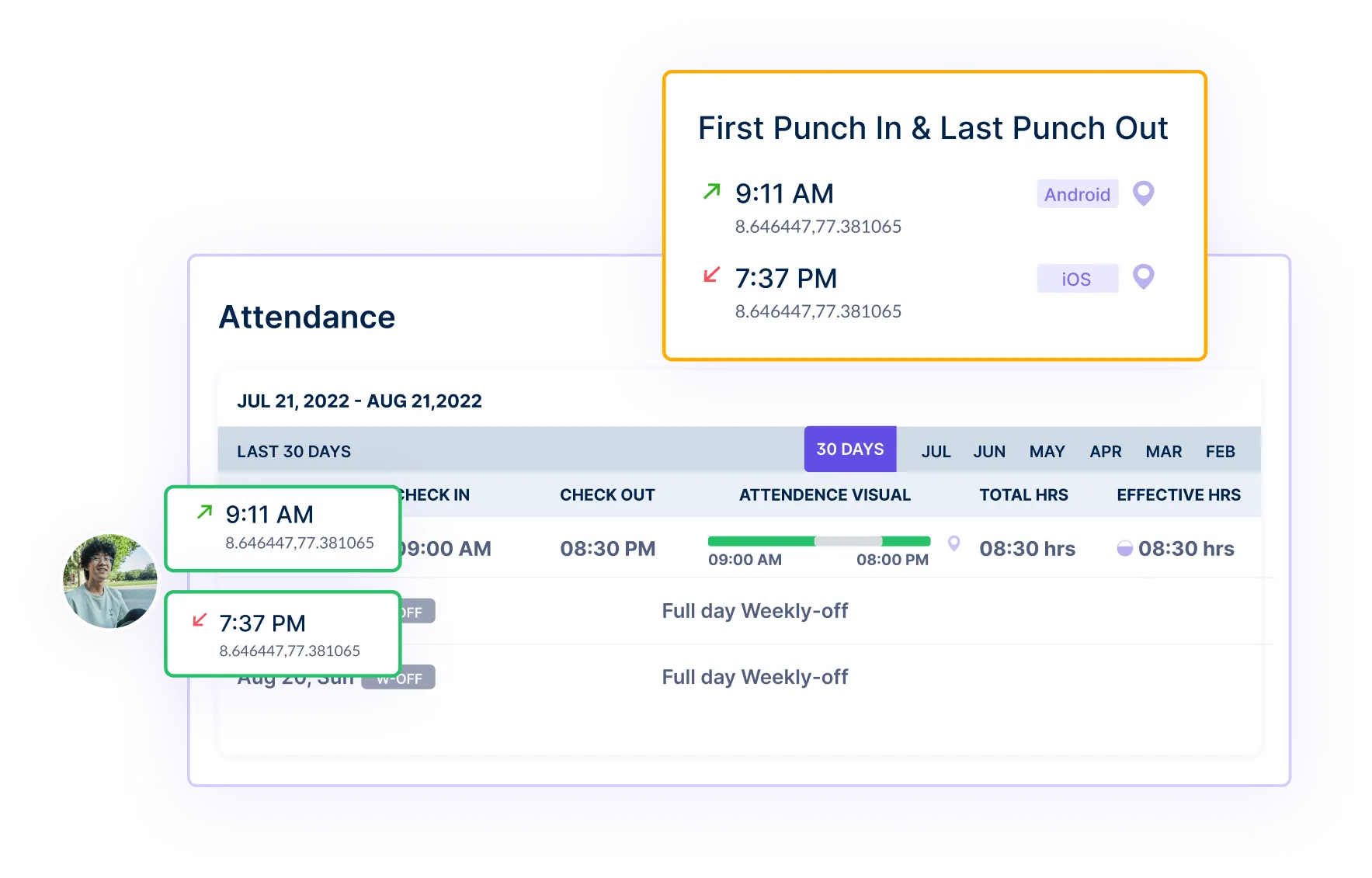 Workstatus attendance management tool provides a robust reporting feature, allowing organizations to generate detailed attendance reports for analysis and decision-making.
Workstatus attendance management tool provides a robust reporting feature, allowing organizations to generate detailed attendance reports for analysis and decision-making.
- Customizable Reports
The platform enables the generation of customizable attendance reports. Users can select the specific data points and timeframes they want to include in their reports.
- Export Capabilities
Workstatus offers the option to export attendance data to other systems or for further analysis, streamlining payroll processing and HR reporting.
- Data-Driven Decisions
Attendance reports provide valuable insights that help organizations make informed decisions about attendance management, workforce planning, and policy adjustments.
- Integrating Into Existing Platforms

Workstatus attendance management tool is designed to seamlessly integrate into existing platforms, ensuring that attendance data flows smoothly through an organization’s processes.
- Integration Compatibility
Workstatus offers integration options with various time and attendance systems, HR software, and payroll systems. This compatibility minimizes disruptions in your existing workflows.
- Data Transfer and Accuracy
Integration ensures the accurate and secure transfer of attendance data between systems, reducing the risk of errors and streamlining data management.
- Enhanced Efficiency
By integrating attendance management into existing platforms, organizations can achieve greater efficiency and automation, resulting in less manual data entry and a more cohesive approach to workforce management.
All these features make Workstatus a valuable asset for organizations seeking to optimize their attendance management processes.
Conclusion
Crafting a warning letter for attendance issues is essential in maintaining a productive and responsible workforce.
Through clear communication, specific details, and setting expectations, employers can effectively address attendance problems in their organization and promote accountability.
By leveraging features offered by Workstatus, businesses can streamline their attendance tracking processes, leading to better compliance, improved productivity, and increased profitability.












